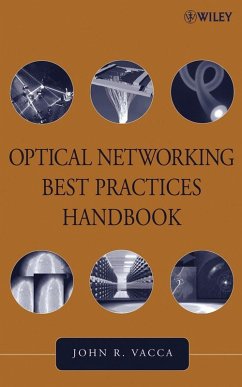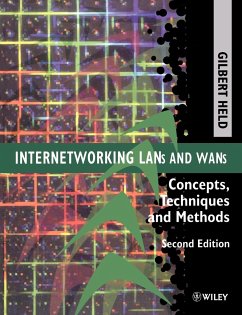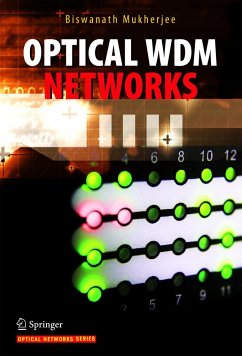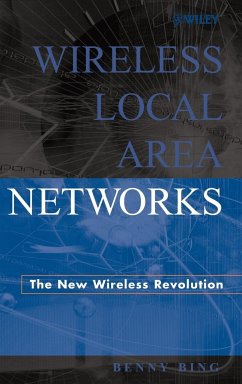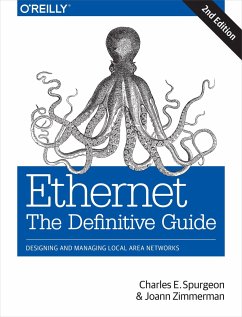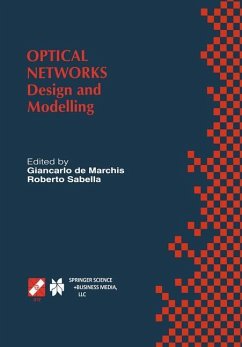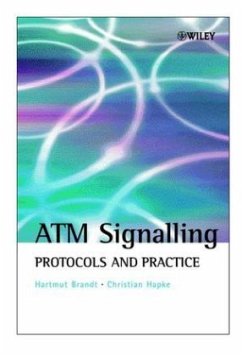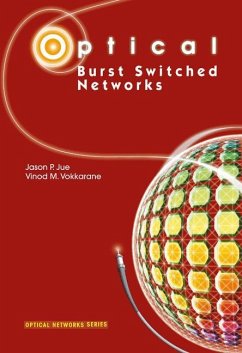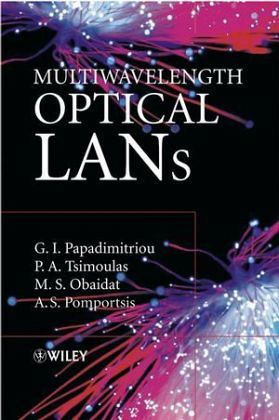
Multiwavelength Optical LANs

PAYBACK Punkte
62 °P sammeln!
A local are network (LAN) is a group of computers and associated devices that share a common communications line and typically share the resources of a single processor or server within a small geographic are (an office building, for example). This book covers an important research area in optical networking. Several books are available but none of them cover optical LAN as specifically and extensively. This book will enable readers to understand the concepts of optical LANs and learn details of architecture issues and control protocols.
During the last thirty years or so it has been widely recognised in the research community that the key transmission medium seeming capable of serving both the ever-growing demand for bandwidth and the unceasing need for new services, is optical fibre. In this context, Wavelength Division Multiplexing (WDM) is the most popular technique for introducing concurrency among multiple user transmissions into the network and, thus, exploiting the huge amount of fibre bandwidth available under the severe limitations imposed by electronics speed on the maximum network access rate.
This book extensively covers an important research area in optical networking, enabling readers to fully understand the concepts of optical LANs and learn details of architecture issues and control protocols.
Through its careful focus on the local area, the book, covers the major architectural, topological and protocol issues regarding optical Local Area Networks (LANs) today. Considering that constant advances on optical component technology make all-optical WDM LANs all the more feasible for a wide commercial deployment, the book investigates thoroughly the crucial latter topic, i.e. the Media-Access Control (MAC) protocols that should be used. Besides introducing a noteworthy part of the vast literature on such protocols and providing some helpful distinguishing key protocol characteristics, the book is also innovative in focusing on a recent significant class of promising protocols whose operation is based on network feedback information. In this way, these adaptive protocols for optical LANs achieve an overall higher performance in comparison with many other non-adaptive schemes.
Multiwavelength Optical LANs:
_ Enables readers to understand the concepts of optical LANs and learn details of architecture issues and control protocols
_ Focuses on the major architectural, topological and protocol issues regarding optical local area networks
_ Presents the important class of adaptive protocols for optical LANs
No Optical systems/network developers, or engineers and scientists working in optical networking should be without this book. The well considered approach also makes this recommended reading for undergraduate and graduate computer science, computer, electrical and telecommunications engineering students.
This book extensively covers an important research area in optical networking, enabling readers to fully understand the concepts of optical LANs and learn details of architecture issues and control protocols.
Through its careful focus on the local area, the book, covers the major architectural, topological and protocol issues regarding optical Local Area Networks (LANs) today. Considering that constant advances on optical component technology make all-optical WDM LANs all the more feasible for a wide commercial deployment, the book investigates thoroughly the crucial latter topic, i.e. the Media-Access Control (MAC) protocols that should be used. Besides introducing a noteworthy part of the vast literature on such protocols and providing some helpful distinguishing key protocol characteristics, the book is also innovative in focusing on a recent significant class of promising protocols whose operation is based on network feedback information. In this way, these adaptive protocols for optical LANs achieve an overall higher performance in comparison with many other non-adaptive schemes.
Multiwavelength Optical LANs:
_ Enables readers to understand the concepts of optical LANs and learn details of architecture issues and control protocols
_ Focuses on the major architectural, topological and protocol issues regarding optical local area networks
_ Presents the important class of adaptive protocols for optical LANs
No Optical systems/network developers, or engineers and scientists working in optical networking should be without this book. The well considered approach also makes this recommended reading for undergraduate and graduate computer science, computer, electrical and telecommunications engineering students.




